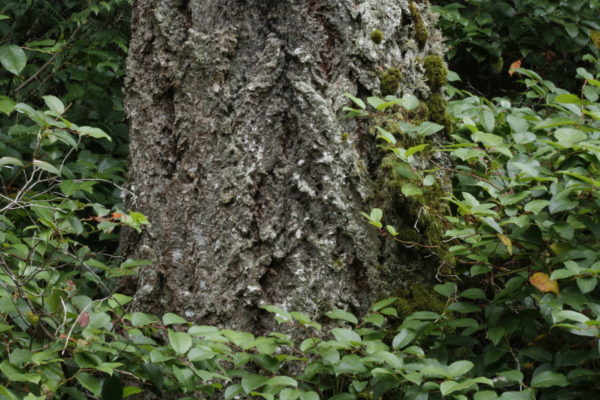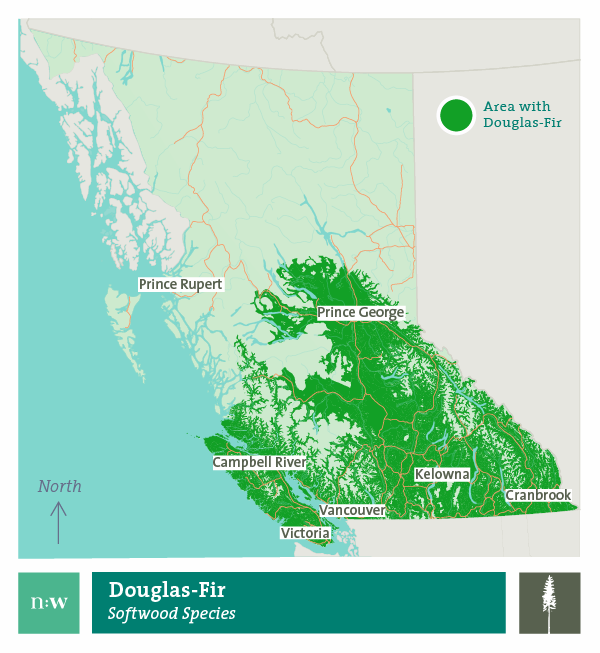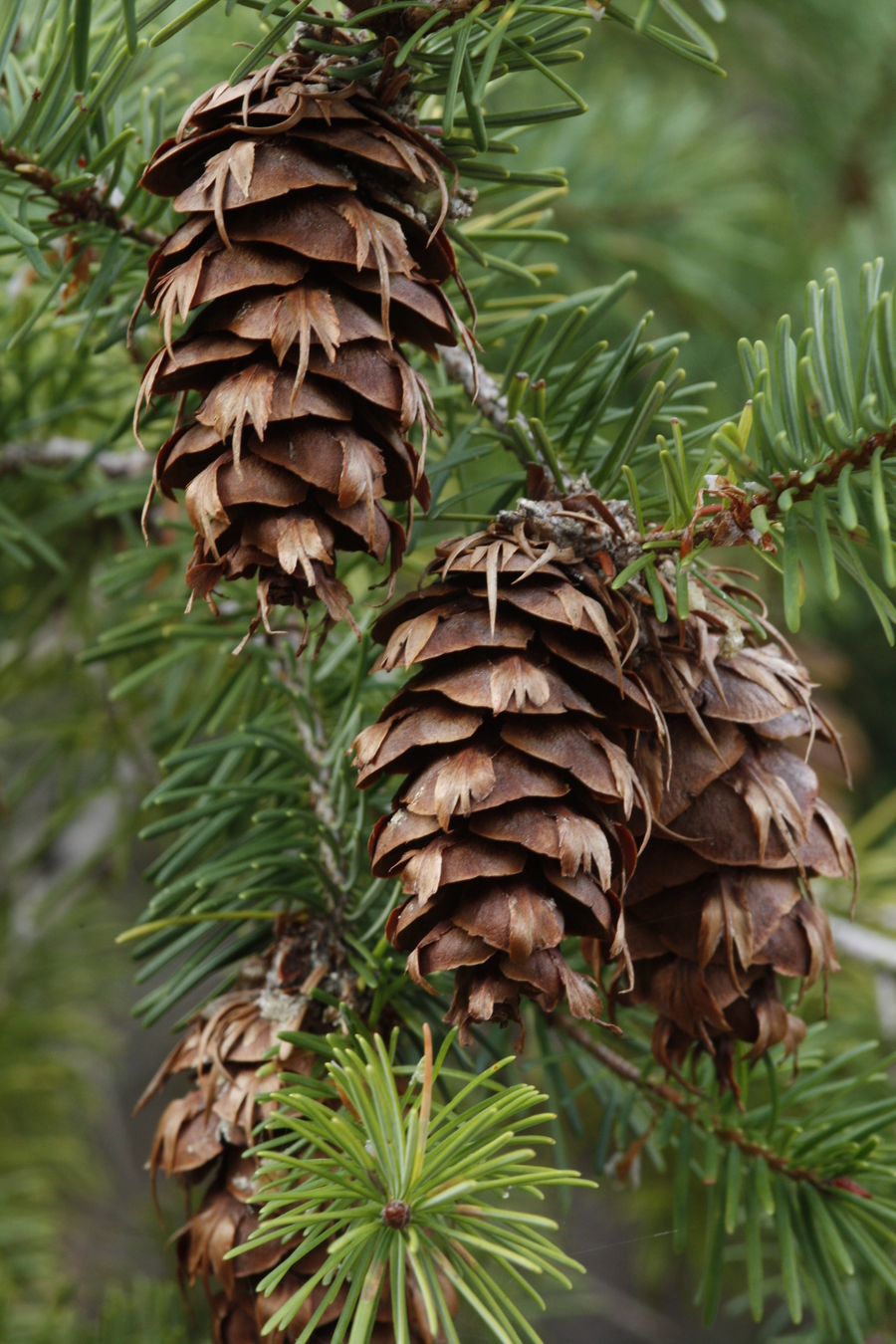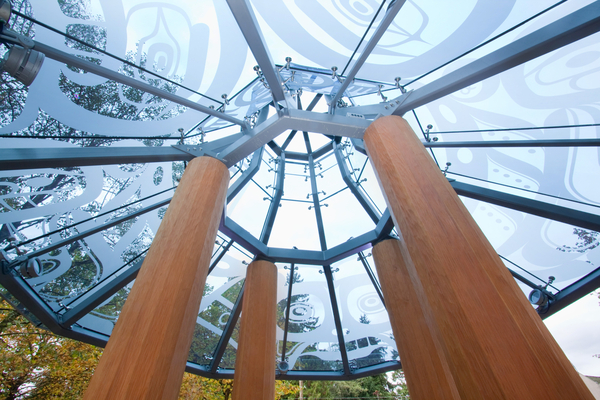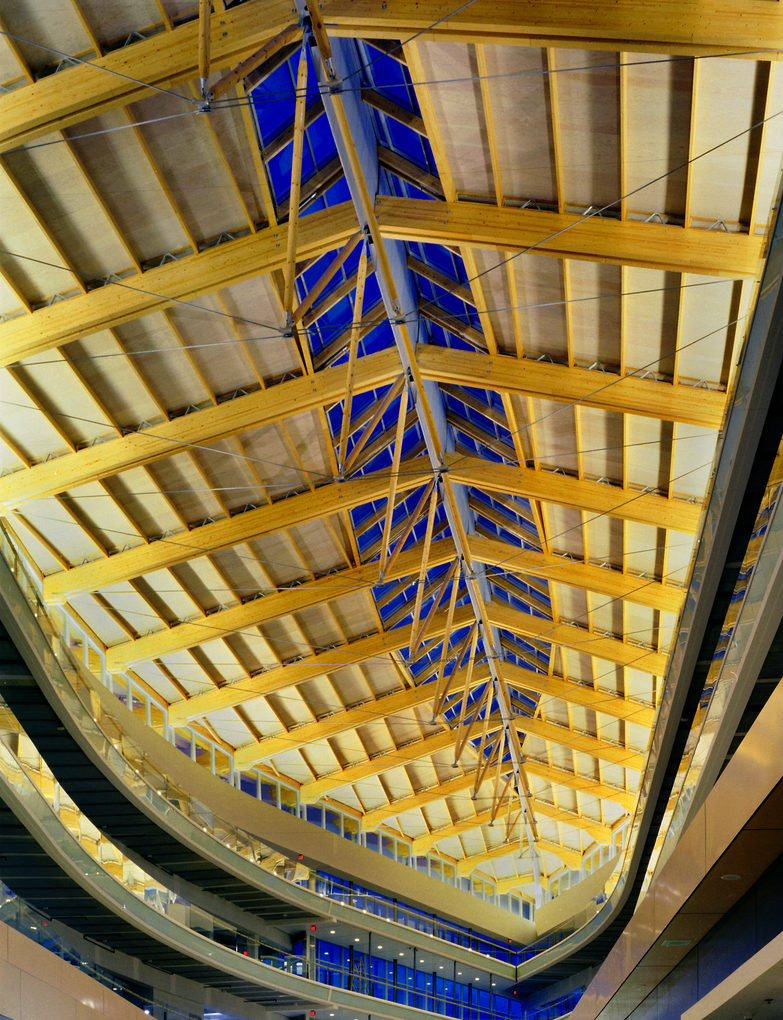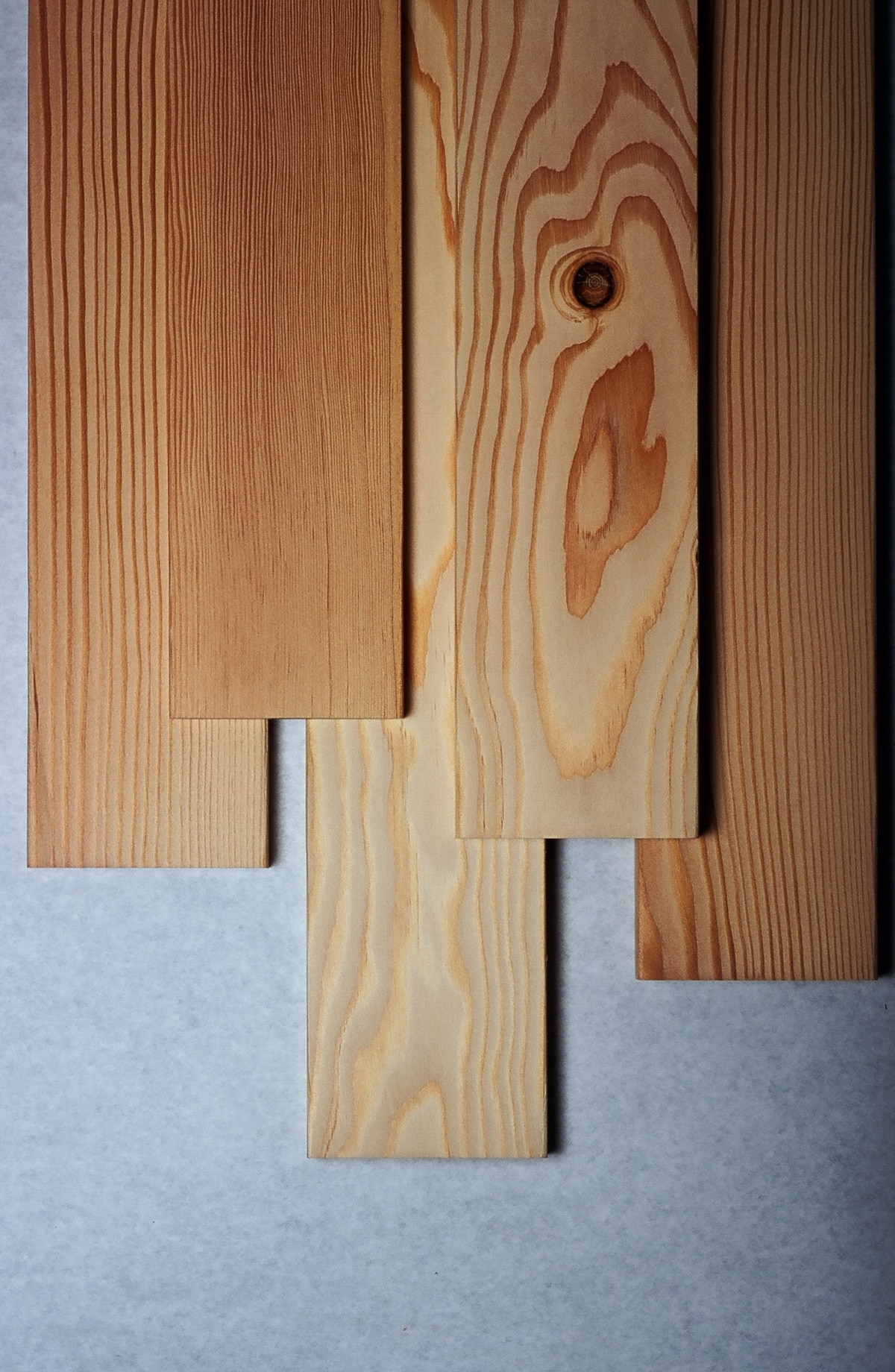Common uses and applications
Due to its strength, Douglas-fir is primarily used for building and construction. It is hard and resistant to abrasion, making it suitable for uses where wear is a factor, such as wharves, trestles, bridge parts, log homes and commercial buildings. It is one of the finest timbers for heavy structural purposes, including glulam beams and roof trusses.
Douglas-fir is a high-quality wood for the manufacturing of sashes, doors and windows. It is also used to produce a wide variety of products including general millwork, flooring, furniture, cabinets, veneer, vats, ships and boats, transmission poles and marine pilings.
Indigenous Peoples in B.C. have many uses for Douglas-fir, including pit cooking fuel, fishing hooks and handles. They also use Douglas-fir boughs for covering the floors of lodges and sweat lodges.
The Land is a Person, sculpture by Marianne Nicolson | Photo courtesy of Barker Manufacturing Inc.
